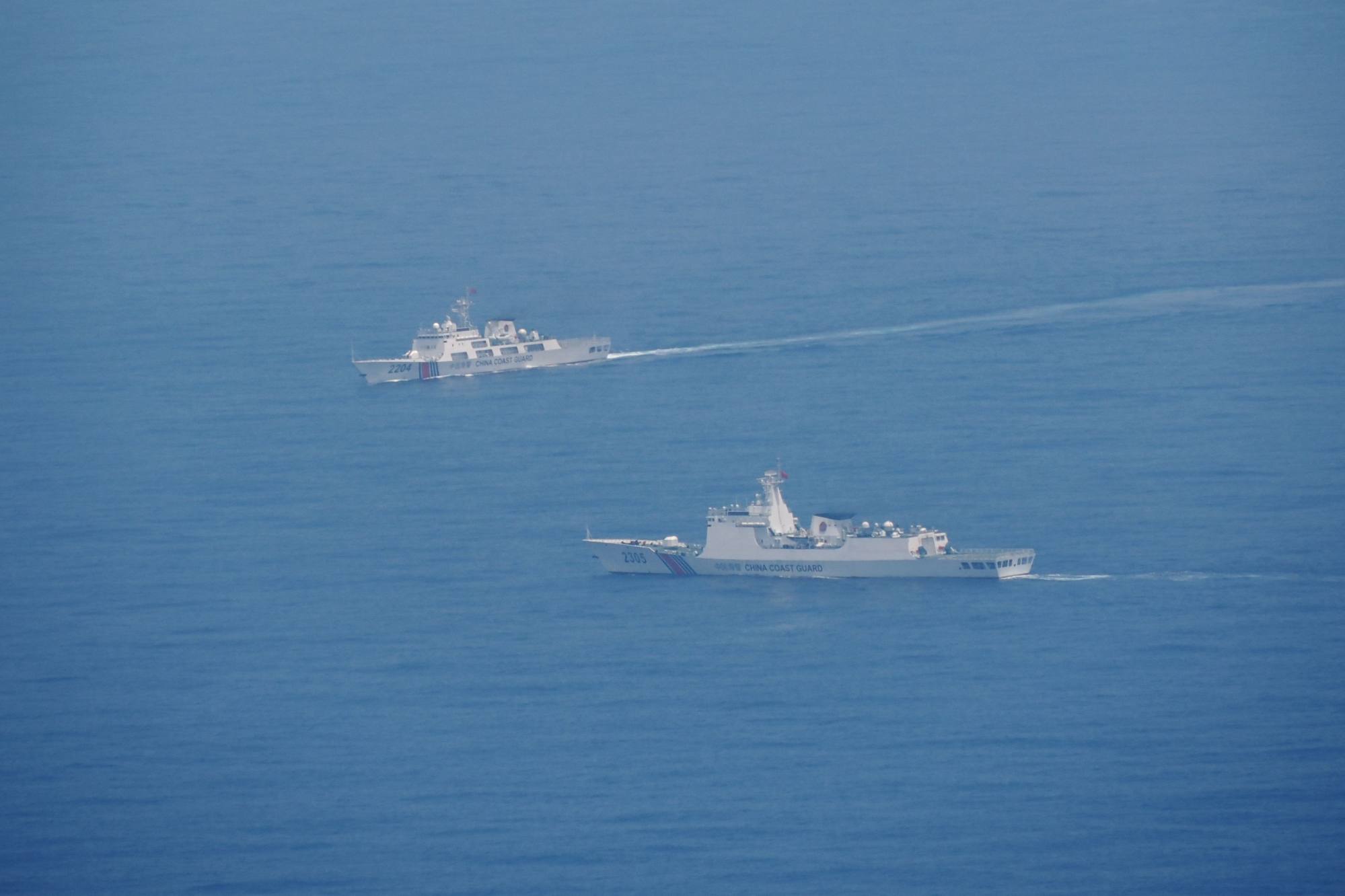
Day 2 of PLA’s Taiwan drills shifts focus to island’s eastern side
- No sign of live fire as mainland military forces conduct sea assault and land strike manoeuvres
- Coastguard also operates publicly on Taiwan’s eastern side for the first time
The Eastern Theatre Command said on Friday that the Sword-2024A drills would continue, with the addition of exercises to occupy “key areas”.
The command said the drills included sea assault and land strike exercises east of Taiwan.
That area had been regarded as a “shelter” for Taiwan independence forces, mainland tabloid Global Times quoted Zhang Chi, an associate professor at the National Defence University, as saying.
Zhang said the exercises showed the PLA’s ability to “occupy main passages”, adding “there is no longer a so-called blind spot” for PLA’s strikes east of Taiwan.
The command has so far not conducted live-fire drills targeting the island, but footage released by the command on Friday showed soldiers carrying out simulated strikes and putting rocket launchers in place.
In addition, the command released a 3D video of simulated strikes, showing targets in the Taiwanese cities of Taipei, Hualien, and Kaohsiung hit by the PLA’s air, naval, and rocket forces.
According to a video released by state broadcaster CCTV, the PLA frigate Nantong sailed as close as 0.6 nautical miles to Taiwan’s warship Zhenghe in the Taiwan Strait on Friday.
The mainland Chinese coastguard also sent a fleet – led by Jiangsu province’s largest vessel, designated 2304, which regularly patrols the East and South China seas – to the waters east of Taiwan on Friday to conduct law enforcement drills, according to a statement released by coastguard spokesman Gan Yu.
The coastguard fleet’s tasks included verification and identification, warnings and evictions, to test its joint patrol and emergency response capabilities, the statement said.
While the mainland coastguard has ramped up its patrols near the island in recent months, this is the first time its vessels have operated publicly on the island’s eastern side, which faces the Pacific Ocean and is usually considered the weak link in Taiwan’s defences.
The mainland coastguard released a picture showing its vessels operating within visible range of Taiwan.
“With each provocation of the ‘Taiwan independence’ separatist forces, our countermeasures will advance one step further until the complete reunification of the motherland is realised,” mainland defence ministry spokesman Wu Qian said.
A Friday commentary by the PLA Daily argued that the drills were “completely just and necessary” to punish “Taiwan separatists” and as a warning to “external forces”.
It again put the focus on Lai’s inauguration speech, which it said was “unprecedented” in its inclination towards Taiwan’s independence, and pledged to “respond in language [separatists] understand”.
The two days of exercises were aimed at punishing Taiwanese separatist forces like Lai, the PLA said.
Imagery released by the Pentagon, on the same day the PLA exercises kicked off, showed the aircraft carrier USS Ronald Reagan operating in the Philippine Sea for fuelling and replenishment missions along with three other ships. US Lieutenant General Stephen Sklenka said the drills around Taiwan were “concerning”, though not unexpected.
Beijing regards Taiwan as part of its territory, to be brought under mainland control, by force if necessary. The United States, like most countries, does not recognise the island but is opposed to any unilateral change to the status quo. Washington is also Taipei’s largest arms provider.
The Taiwanese defence ministry on Friday continued to pledge vigilance against the PLA’s activities. A day earlier, Taipei said it was watching to see if the second day’s drills would involve live fire, which did not take place on Thursday.

Former PLA instructor Song Zhongping said that even without live fire, the drills were already more “targeted” and more focused on readiness patrols.
“If the Taiwan authorities made any moves, [the PLA could] immediately transform this combat patrol into an actual military operation,” Song said.
Having the coastguard off eastern Taiwan was “a warning in itself” that it had the right to carry out law enforcement activities in any waters related to the island, he said.
Song said the word “key areas occupation” meant that if the Taiwan authorities kept pursuing an independence position, Beijing would occupy strategic positions to blockade the entire Taiwan region, laying a foundation for further military action.
Senior Colonel Zhou Bo (retired), a senior fellow with the Centre for International Security and Strategy at Tsinghua University, said these drills might not be as big as the ones launched after former US House speaker Nancy Pelosi visited Taiwan in August 2022, but they encompassed the entire Taiwan geographic area.
Zhou said the term “key areas occupation” essentially means focusing on controlling strategic locations for battles.
According to the island’s defence ministry, 49 PLA aircraft, 19 PLA naval vessels, and seven coastguard vessels were detected operating around Taiwan in the 24 hours to 6am on Friday.
The ministry said that 35 aircraft crossed the median line – a notional midpoint in the Taiwan Strait – and entered the southwestern air defence identification zone. The island’s armed forces monitored the situation and responded accordingly, it said.
The number of aircraft detected near the island on Friday was lower than the PLA’s first day of drills after former Taiwanese leader Tsai Ing-wen’s meeting last April with then US House speaker Kevin McCarthy. On that day 71 PLA planes were spotted.
Pelosi’s visit was followed by days of PLA drills, including live-fire exercises and a blockade. The first day saw 22 warplanes sent near Taiwan.
The European Union’s diplomatic unit called for restraint and the avoidance of actions that could escalate tensions.
“The EU has a direct interest in the preservation of the status quo in the Taiwan Strait. We oppose any unilateral actions that change the status quo by force or coercion,” it said.
“All parties should exercise restraint and avoid any actions that may further escalate cross-strait tensions, which should be resolved through dialogue.”



